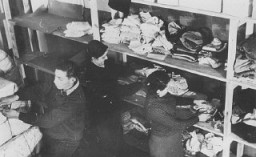You searched for: ��������������������������������������������� ���fuk7778���labor
<< Previous | Displaying results 651-700 of 1002 for "��������������������������������������������� ���fuk7778���labor" | Next >>
-
Oranienburg
ArticleThe Oranienburg concentration camp was established as one of the first concentration camps in Nazi Germany on March 21, 1933. Learn more

-
Anti-Jewish Legislation in North Africa
ArticleThe Vichy regime introduced race laws to the North African territories in October of 1940. Learn about the impact of the laws on the region’s Jewish people.
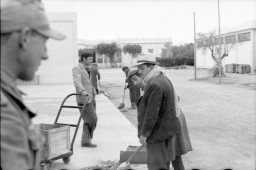
-
Japanese American Relocation
ArticleLearn more about the forcible relocation of some 120,000 people of Japanese descent living in the US to “relocation centers.”

-
Ida Edelstein
ID CardIda, born Ida Kohn, was the oldest of four children born to a Jewish family in the village of Hostoun, near Prague. Her father owned a grocery store in the village, and also recorded the birth, death and marriage certificates in the Jewish community. In 1912 Ida married Josef Edelstein and they moved to Vienna. By 1920 the couple had a son, Wilhelm, and a daughter, Alice. 1933-39: In March 1938 the Germans annexed Austria. In the next few weeks, Ida, along with other Jews, was forced to scrub sidewalks.…
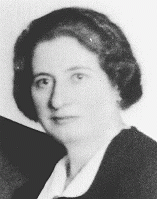
-
Marta Herman
ID CardThe younger of two daughters, Marta was raised by Hungarian-speaking Jewish parents in Kosice, a city in Slovakia. Marta attended a Jewish elementary school. Her father ran a small grocery store. 1933-39: After Marta finished elementary school, she began secondary school. The language of instruction was Slovak and Jews faced no discrimination until November 1938 when Hungarian troops marched into southern Slovakia. With Germany's blessing, Kosice became part of Hungary and was renamed Kassa. Their new…

-
Maria Orlicka
ID CardMaria was born to a poor family in the industrial town of Jaworzno, not far from Krakow, in southwestern Poland. Both of Maria's parents worked. Like her parents, Maria was baptized in the Roman Catholic faith. 1933-39: Maria took care of the house when her parents were working. She was 11 years old when the Germans invaded Poland on September 1, 1939. German troops reached Jaworzno that same month. Jaworzno was in an area of Poland that became formally annexed to Germany. 1940-44: The Germans arrested…
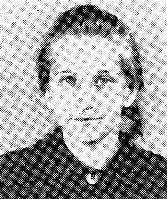
-
Janka Glueck Gruenberger
ID CardJanka was one of seven children raised in a Yiddish-and Hungarian-speaking household by religious Jewish parents in the city of Kosice. In 1918, when she was 20 years old, Kosice changed from Hungarian to Czechoslovak rule. Three years later, Janka married Ludovit Gruenberger, and their three children were born Czech citizens. 1933-39: Janka was an accomplished milliner, and she helped her husband run a tailoring business from their apartment. Like many Jews in Kosice, Janka and Ludovit were upset when…
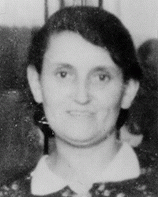
-
Zuzana Gruenberger
ID CardZuzana was the youngest of three children born to Hungarian-speaking Jewish parents in the city of Kosice. She was the baby of the family, and they called her Zuzi. Her father was a tailor whose workshop was in the Gruenbergers' apartment. 1933-39: In November 1938, when Zuzana was 5, Hungarian troops marched into Kosice and made it a part of Hungary. The Hungarians changed the name of the city to Kassa. The Hungarian government was friendly to Nazi Germany and introduced anti-Jewish laws in…
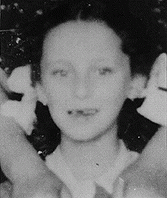
-
Robert Kulka
ID CardRobert was the son of Jewish parents, Leopold and Florentina Kulka, and was raised in the Moravian town of Olomouc. After completing secondary school, he attended a business school until 1909. He began a business in Olomouc and in 1933 he married Elsa Skutezka from the Moravian city of Brno. The couple made their home in Olomouc. 1933-39: The Kulkas' son, Tomas, was born a year and a day after they were married. In 1937 Elsa's father passed away and the Kulkas moved to Brno, where Elsa and her husband…
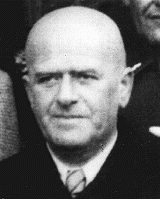
-
Shlomo Reich
ID CardShlomo was one of seven children born in Lodz to the Reich family. The Reichs were a religious Jewish family, and Shlomo's Hasidic father wore earlocks and a traditional fur hat. After public school every day, Shlomo attended the Ostrovtze Yeshiva, a rabbinical academy where he studied Jewish holy texts. Shlomo's father owned a shoelace factory. 1933-39: The Germans invaded Lodz in September 1939 and began to institute anti-Jewish measures. Jews were not allowed to use public transportation, to leave the…

-
Benjamin Soep
ID CardBenjamin, called "Benno" by his family and friends, grew up in a religious Jewish household in Amsterdam. Benno's father, a successful diamond manufacturer, was president of the Amsterdam Jewish community. Benno had two younger sisters and enjoyed collecting stamps. 1933-39: After he obtained some work experience in a department store, Benno joined his father in the diamond business. Benno adhered strictly to Jewish law. He loved tennis and skiing, and in 1938, while skiing in Switzerland, he met a girl…
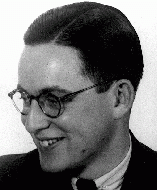
-
Rozia Grynbaum
ID CardRozia was the second-oldest of nine children born to religious Jewish parents in Starachowice, a town in east-central Poland. Their small one-story house served as both the family's residence and their tailor shop. The tailoring was often done in exchange for goods such as firewood or a sack of potatoes. Rozia worked in the shop sewing women's clothing. 1933-39: Rozia married a Jewish tailor from Radom, a large town some 60 miles south of Warsaw. The couple settled in Starachowice, and they ran a tailor…
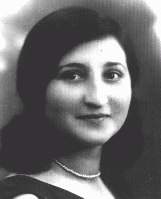
-
Hana Müller
ID CardHana was born to a Jewish family in Prague, the capital of Czechoslovakia. Her father, a metalsmith, made pipes, spouts and gutters for construction companies. Because her mother was frail, Hana was raised by her father and grandmother. She attended a Jewish school through grade five, and later went to business school. 1933-39: In 1933 Hana read about the harrowing treatment of Jews during the Spanish Inquisition and told her grandmother, "Aren't we fortunate that we live in the 20th century in…

-
Frederick Dermer
ID CardFrederick was born to a Jewish family in the Austrian capital of Vienna. His father died when he was a baby, and he and his mother moved into an apartment with Frederick's widowed grandfather. As a young boy, Frederick attended a Viennese public school. 1933-39: Frederick was a rambunctious child. Once, when his grandfather was baby-sitting, Frederick used a silk lampshade as a "parachute," and jumped from the top of the wardrobe closet. That was the last time Frederick's grandfather would baby-sit.…

-
Jacob Gamper
ID CardJacob was born to a Jewish family in the Baltic seaport of Liepaja. He owned a clothing store in the city, and also owned some apartments, from which he collected rent. After his wife died, Jacob, who had retired, moved in with his daughter Sarah. 1933-39: Jacob was an avid reader. His favorite newspaper was Liepaja's German language daily, the Libauer Zeitung, which he liked to read in the garden and orchard around his daughter's home. On Sundays, "Grampa" would take his granddaughters Fanny and Jenny…
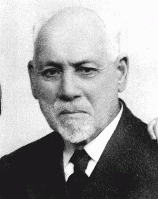
-
Herman Judelowitz
ID CardHerman was the oldest of nine children born to a Jewish family in the Latvian village of Aizpute. He was a World War I veteran, and after the conflict, in 1918, he fought for the establishment of a free Latvian republic. Two years later he married Sarah Gamper and they settled in the city of Liepaja, where they owned a shoe store. By the late 1920s they had two daughters, Fanny and Jenny. 1933-39: Herman designed patterns for the uppers of shoes, which he used to fashion into finished shoes. His shoe…
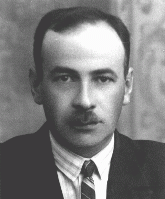
-
Cover of Stanislava Roztropowicz's diary
ArtifactStanislava Roztropowicz kept a diary from 1943-1944. In it, she describes her family's decision to hide an abandoned Jewish girl, Sabina Heller (Kagan). Sabina Kagan was an infant when SS mobile killing squads began rounding up Jews in her Polish village of Radziwillow in 1942. Her parents persuaded a local policeman to hide the family. The policeman, however, soon asked the Kagans to leave but agreed to hide baby Sabina. Her parents were captured and killed. Sabina was concealed in a dark basement,…
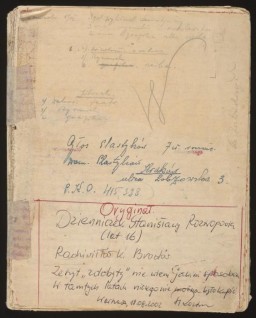
-
Page from Stanislava Roztropowicz's diary
ArtifactStanislava Roztropowicz kept a diary from 1943-1944. In it, she describes her family's decision to hide an abandoned Jewish girl, Sabina Heller (Kagan). Sabina Kagan was an infant when SS mobile killing squads began rounding up Jews in her Polish village of Radziwillow in 1942. Her parents persuaded a local policeman to hide the family. The policeman, however, soon asked the Kagans to leave but agreed to hide baby Sabina. Her parents were captured and killed. Sabina was concealed in a dark basement,…

-
Back cover of Stanislava Roztropowicz's diary
ArtifactStanislava Roztropowicz kept a diary from 1943-1944. In it, she describes her family's decision to hide an abandoned Jewish girl, Sabina Heller (Kagan). Sabina Kagan was an infant when SS mobile killing squads began rounding up Jews in her Polish village of Radziwillow in 1942. Her parents persuaded a local policeman to hide the family. The policeman, however, soon asked the Kagans to leave but agreed to hide baby Sabina. Her parents were captured and killed. Sabina was concealed in a dark basement,…
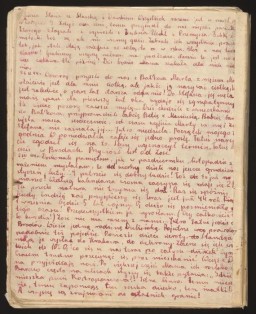
-
Ilona Haas Geroe
ID CardIlona was one of seven children born to a Jewish family in the city of Szeged, about 100 miles south of Budapest. Her father was an accountant. At the turn of the century many of Ilona's father's relatives emigrated to the United States, but Ilona's father decided to stay. Ilona also became an accountant and got a job in Szeged. 1933-39: Ilona's work as an accountant kept her busy but her free time was spent enjoying music and sports. She also began to study English since so many of her relatives had…
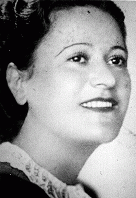
-
Maria Nemeth
ID CardMaria's parents lived in Szentes, a town in southeastern Hungary, located 30 miles from the city of Szeged. Her mother, Barbara, was born in the neighboring town of Hodmezovasarhely, but moved to Szentes when she married. Maria's father was a dentist. 1933-39: Maria was born in 1932. In 1937 her mother took in a young Austrian woman who lived with the family and helped Maria learn German. 1940-44: In March 1944 German troops occupied Hungary. Members of the Hungarian fascist party, Arrow Cross,…

-
Julia Polak Bolle
ID CardJulia, her brother and two sisters grew up in Amsterdam in a religious, Zionist Jewish family. The Polak family could trace its roots in the Netherlands back 200 years. Julia attended a Jewish school, and she was proficient in Hebrew. 1933-39: Julia loved to study and teach the Hebrew language. As a leader of Zionist youth, Julia spoke to many groups about creating a Jewish home in Palestine [Yishuv]. Her boyfriend was also involved in Zionist work, and in 1938 they were married. The couple became part of…
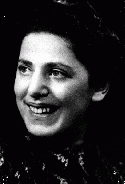
-
Dezider Gruenberger
ID CardDezider was the oldest of three children born to Hungarian-speaking Jewish parents in the city of Kosice in the southeastern part of Czechoslovakia known as Slovakia. As a young boy, he attended a Jewish elementary school. His father was a tailor whose workshop was in the Gruenberger's small apartment. 1933-39: After Dezider finished elementary school, he entered secondary school with a view to going on to the university. The language of instruction was Slovak, and Jews faced no discrimination until…
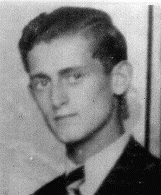
-
Max Krakauer
ID CardMax was the oldest of six children born to Jewish parents in the small Moravian town of Hodonin, where his father ran a dry-goods and clothing store. His family spoke both Czech and German at home, and Max attended German-language schools in Hodonin and Lipnik. He completed his education in 1920. Born with a heart condition, Max lived a sheltered life. 1933-39: Max's father, Bernard, was getting on in years and wanted to retire. Max was not strong enough to take over the business, so the Krakauers sold…

-
Leo Nitschke
ID CardLeo was one of two children born to Jewish parents in the Moravian capital of Brno. When Leo was a child his father died, and Leo and his sister, Edita, were raised by their German-born mother. On November 27, 1931, Leo graduated with a law degree from Brno University. 1933-39: After courting Hilda Krakauerova, a dental technician, Leo married her on December 23, 1935. Leo served as a district judge in Brno and in the town of Postejov, and in 1938 he was appointed judge and secretary to the Moravian…
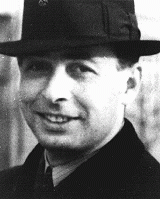
-
Law on the Head of State of the German Reich
ArticleThe Law on the Head of State of the German Reich was the last step in destroying democracy in interwar Germany and making Adolf Hitler a dictator. Learn more.
-
Allied prisoner of war describes work details
FilmMost Allied prisoners of war (POWs) were treated well compared to inmates of concentration camps. But, as former Dutch POW Captain Boullard explains here at Dachau concentration camp, some were subject to severe beatings and forced to work in harsh labor assignments.
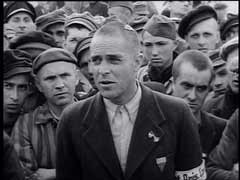
-
Alice Lok Cahana describes arrival at Bergen-Belsen
Oral HistoryGermany occupied Hungary in 1944. Alice was deported to Auschwitz in the same year. At one time she was selected for the gas chamber, but survived because of a malfunction. As Allied forces approached the camp, Alice and other inmates were evacuated to the Guben labor camp. Alice, her sister, and another girl escaped during a forced march from the camp but were found and sent on to Bergen-Belsen. Alice's sister was taken to a Red Cross hospital, but Alice never saw her again. After the war, Alice…
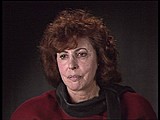
-
Hana Mueller Bruml describes the vibrant cultural life in the Theresienstadt ghetto
Oral HistoryIn 1942, Hana was confined with other Jews to the Theresienstadt ghetto, where she worked as a nurse. There, amid epidemics and poverty, residents held operas, debates, and poetry readings. In 1944, she was deported to Auschwitz. After a month there, she was sent to Sackisch, a Gross-Rosen subcamp, where she made airplane parts at forced labor. She was liberated in May 1945.

-
Belle Mayer Zeck reflects upon the sentences given to leaders of the economy
Oral HistoryBelle Mayer trained as a lawyer and worked for the General Counsel of the US Treasury, Foreign Funds Control Bureau. This bureau worked to enforce the Trading With the Enemy Act passed by Congress. In this capacity, Mayer became familiar with the German I. G. Farben chemical company, a large conglomerate that used slave labor during World War II. In 1945, Mayer was sent as a Department of Treasury representative to the postwar London Conference. She was present as representatives from the Allied nations…
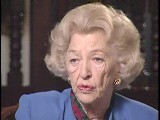
-
Drexel Sprecher describes a witness at the Nuremberg trials
Oral HistoryDrexel Sprecher was educated at the University of Wisconsin, the London School of Economics, and at the Harvard School of Law before receiving a position at the US Government's Labor Board in 1938. He enlisted in the American military after the United States declared war on Germany, and was posted to London. After the war, Sprecher served as a prosecutor of Nazi war criminals at the Nuremberg trials.
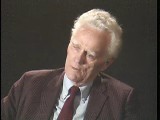
-
Drexel Sprecher describes layout of the courtroom at Nuremberg
Oral HistoryDrexel Sprecher was educated at the University of Wisconsin, the London School of Economics, and at the Harvard School of Law before receiving a position at the US Government's Labor Board in 1938. He enlisted in the American military after the United States declared war on Germany, and was posted to London. After the war, Sprecher served as a prosecutor of Nazi war criminals at the Nuremberg trials.

-
Abraham Lewent describes hunger and death in the Warsaw ghetto
Oral HistoryLike other Jews, the Lewents were confined to the Warsaw ghetto. In 1942, as Abraham hid in a crawl space, the Germans seized his mother and sisters in a raid. They perished. He was deployed for forced labor nearby, but escaped to return to his father in the ghetto. In 1943, the two were deported to Majdanek, where Abraham's father died. Abraham later was sent to Skarzysko, Buchenwald, Schlieben, Bisingen, and Dachau. US troops liberated Abraham as the Germans evacuated prisoners.
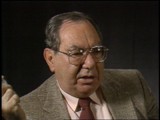
-
Lucine Horn describes the German occupation of Lublin
Oral HistoryLucine was born to a Jewish family in Lublin. Her father was a court interpreter and her mother was a dentist. War began with the German invasion of Poland on September 1, 1939. Lucine's home was raided by German forces shortly thereafter. Soon after the German occupation of Lublin, Jews there were forced to wear a compulsory badge identifying them as Jews. A ghetto in Lublin was closed off in January 1942. Lucine survived a series of killing campaigns and deportations from the ghetto during March and…
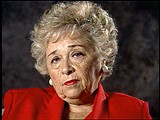
-
Leo Schneiderman describes arrival at Auschwitz, selection, and separation from his family
Oral HistoryThe Germans invaded Poland in September 1939. Leo and his family were confined to a ghetto in Lodz. Leo was forced to work as a tailor in a uniform factory. The Lodz ghetto was liquidated in 1944, and Leo was deported to Auschwitz. He was then sent to the Gross-Rosen camp system for forced labor. As the Soviet army advanced, the prisoners were transferred to the Ebensee camp in Austria. The Ebensee camp was liberated in 1945.
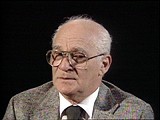
-
Ruth Meyerowitz describes her memories of the Auschwitz crematoria
Oral HistoryIn Frankfurt, Ruth's family faced intensifying anti-Jewish measures; her father's business was taken over and Ruth's Jewish school was closed. In April 1943, Ruth and her family were deported to Auschwitz. Ruth was selected for forced labor and assigned to work on road repairs. She also worked in the "Kanada" unit, sorting possessions brought into the camp. In November 1944, Ruth was transferred to the Ravensbrueck camp system, in Germany. She was liberated in May 1945, during a death march from the…
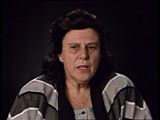
-
Miso (Michael) Vogel describes the crematoria at Auschwitz-Birkenau
Oral HistoryIn 1939, Slovak fascists took over Topol'cany, where Miso lived. In 1942, Miso was deported to the Slovak-run Novaky camp and then to Auschwitz. At Auschwitz, he was tattooed with the number 65,316, indicating that 65,315 prisoners preceded him in that series of numbering. He was forced to labor in the Buna works and then in the Birkenau "Kanada" detachment, unloading incoming trains. In late 1944, prisoners were transferred to camps in Germany. Miso escaped during a death march from Landsberg and was…

-
Hana Mueller Bruml describes an encounter with a non-Jewish friend in Prague
Oral HistoryIn 1942, Hana was confined with other Jews to the Theresienstadt ghetto, where she worked as a nurse. There, amid epidemics and poverty, residents held operas, debates, and poetry readings. In 1944, she was deported to Auschwitz. After a month there, she was sent to Sackisch, a Gross-Rosen subcamp, where she made airplane parts at forced labor. She was liberated in May 1945.
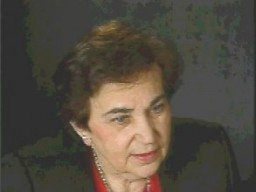
-
The Underground in the Zhetel Ghetto
ArticleYizkor (memorial) books document Jewish communities destroyed in the Holocaust. Read an excerpt about resistance in the ghetto from the Zhetel memorial book.
-
Chaim Kozienicki
ArticleChildren's diaries bear witness to some of the most heartbreaking experiences of the Holocaust. Learn about the diary and experiences of Chaim Kozienicki.
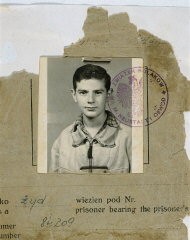
-
The SS
ArticleThe SS (Schutzstaffel) was the elite guard of the Nazi regime and a virtual state within the Third Reich.
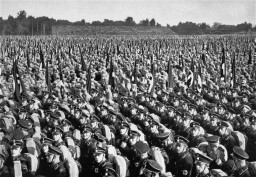
-
Theresienstadt: Establishment
ArticleLearn about the establishment of the Theresienstadt camp/ghetto, which served multiple purposes from 1941-45 and had an important propaganda function for the Germans.

-
Nazi Propaganda
ArticleNazi propaganda had a key role in the persecution of Jews. Learn more about how Hitler and the Nazi Party used propaganda to facilitate war and genocide.

-
Liberation of Nazi Camps
ArticleThe liberation of concentration camps toward the end of the Holocaust revealed unspeakable conditions. Learn about liberators and what they confronted.

-
Raoul Wallenberg and the Rescue of Jews in Budapest
ArticleSwedish diplomat Raoul Wallenberg led an extensive rescue effort during the Nazi era. His work with the War Refugee Board saved thousands of Hungarian Jews.
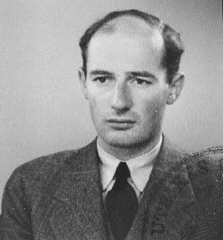
-
Hermann Ludwig Maas
ArticleHermann Ludwig Maas, a Protestant pastor in Heidelberg, Germany, was a rescuer and clergyman who stood in solidarity with the Jewish community.
-

-
Wartime Fate of the Passengers of the St. Louis
ArticleIn May 1939, the St. Louis set sail from Germany to Cuba. Most of the passengers, fleeing Nazi Germany, were denied entry. Learn more about their fates.
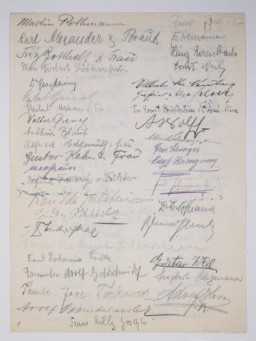
-
Hungary after the German Occupation
ArticleThe Nazis invaded Hungary in 1944 to prevent the government from negotiating an armistice with the Allies. Learn more about conditions in occupied Hungary.

-
Polish Jewish Refugees in Lithuania, 1939–40
ArticleLearn more about Polish Jewish refugees that relocated to Lithuania between 1939-1940.
